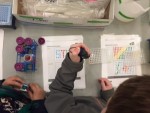Afterschool STEM learning is happening, and more is wanted! This special report from America After 3pm, the decade-long investigative survey by Afterschool Alliance of how children spend the hours between 3 and 6 p.m., offers a focused review of the data on STEM programming throughout the country. Released in September, here are some key findings and how library-facilitated STEM learning experiences can help:
- The number of children participating in afterschool programs has grown from 6.5 million to 10 million in the last 10 years. Parents of an additional 19.4 million children would enroll their children if a program were available.
Afterschool programming is a much-needed opportunity for libraries to engage their communities’ children.
- Seven million children attend afterschool STEM programs, with similar rates for girls and boys and increased rates for African-Americans and Hispanics.
Afterschool STEM programming can inspire those particularly under-represented in STEM fields: women, African-Americans, and Hispanics.
- STEM programs need to be accessible, convenient, frequent, and quality. Rural areas in particular suffer from a scarcity of reliable, quality STEM programs.
As 21st century community learning centers, libraries are uniquely situated to provide on-going, informal, and accessible quality STEM programs.
- 70% of parents think afterschool programming should provide STEM experiences, yet the majority do not consider it a major factor in choosing an afterschool program.
Library-facilitated science learning can directly communicate the power of STEM programming to parents and thus engage and motivate parent advocacy to expand and support STEM programs for children.
- Technology and engineering are rapidly-growing, 21st century fields and the least represented in afterschool programs.
Libraries can provide informal, hands-on learning opportunities for children to use technology like telescopes and microscopes, build or tinker, all of which can ignite interest in these fields.
- Partnerships with STEM professionals and educators are key to effective STEM programming.
Libraries don’t have to go it alone. As experts in bringing communities together, they can facilitate STEM collaboration to enrich the lives and learning opportunities of all.
Find inspiration in the innovative afterschool STEM programs from around the country that are highlighted throughout this report. Resources to further assist librarians in planning their own STEM programming, as well as information on the Afterschool Alliance’s database of funding opportunities, are listed at the end. To read more, click here!


